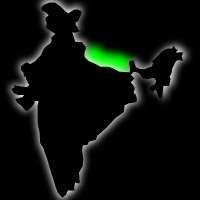|
 India and the Kingdom of Nepal enjoy close cultural and friendly relations. There is a predominant Hindu population in both the countries and Hinduism is the national religion of Nepal. Close cultural links between India and Nepal are consistently visible among the people of the two countries. The famous Pasupathi temple of Nepal is a holy shrine of the Hindus. The Vaishnav community of Hindus in both India and Nepal throng the holy place of Shaligram in Nepal every year. The riverbed of Shaligram is famous for coral formations. It is believed by the Vaishnavites that possessing a Shaligram coral, a symbolic representation of Vishnu, brings about peace, prosperity and goodness in the family. Varnasi, BodhGaya, Allahabad, Badrinath are some of the holy places in India which are visited by Nepalese. India and the Kingdom of Nepal enjoy close cultural and friendly relations. There is a predominant Hindu population in both the countries and Hinduism is the national religion of Nepal. Close cultural links between India and Nepal are consistently visible among the people of the two countries. The famous Pasupathi temple of Nepal is a holy shrine of the Hindus. The Vaishnav community of Hindus in both India and Nepal throng the holy place of Shaligram in Nepal every year. The riverbed of Shaligram is famous for coral formations. It is believed by the Vaishnavites that possessing a Shaligram coral, a symbolic representation of Vishnu, brings about peace, prosperity and goodness in the family. Varnasi, BodhGaya, Allahabad, Badrinath are some of the holy places in India which are visited by Nepalese.
 The border between India and Nepal is open for free transit for the citizens of both countries. The geographical proximity of India has encouraged a large number of Nepalese to study and seek employment in India. Many Indians in Nepal are engaged in trade and commerce too. India has helped Nepal in its development by providing aid for building roads, bridges, power and irrigation, hospitals, and telephone exchanges. India has also provided port facilities to Nepal at Calcutta and a rail route to Bangladesh via India. The border between India and Nepal is open for free transit for the citizens of both countries. The geographical proximity of India has encouraged a large number of Nepalese to study and seek employment in India. Many Indians in Nepal are engaged in trade and commerce too. India has helped Nepal in its development by providing aid for building roads, bridges, power and irrigation, hospitals, and telephone exchanges. India has also provided port facilities to Nepal at Calcutta and a rail route to Bangladesh via India.
There are a lot of joint venture projects between India and Nepal in the field of tourism, infrastructure, education, garment exports, and water resources development. Principal exports to Nepal from India are transport equipment, drugs and pharmaceuticals, machinery and instruments, glassware and ceramics, coal, yarn fabric madeups, tobacco, paper and wood products, processed items, manufactures of metals, cosmetics and spices among many. India imports pulses, medicinal and pharma, essential oil, raw jute, raw hides and skins, edible vegetable oils, cereal preparations and oil seeds from Nepal.
|





